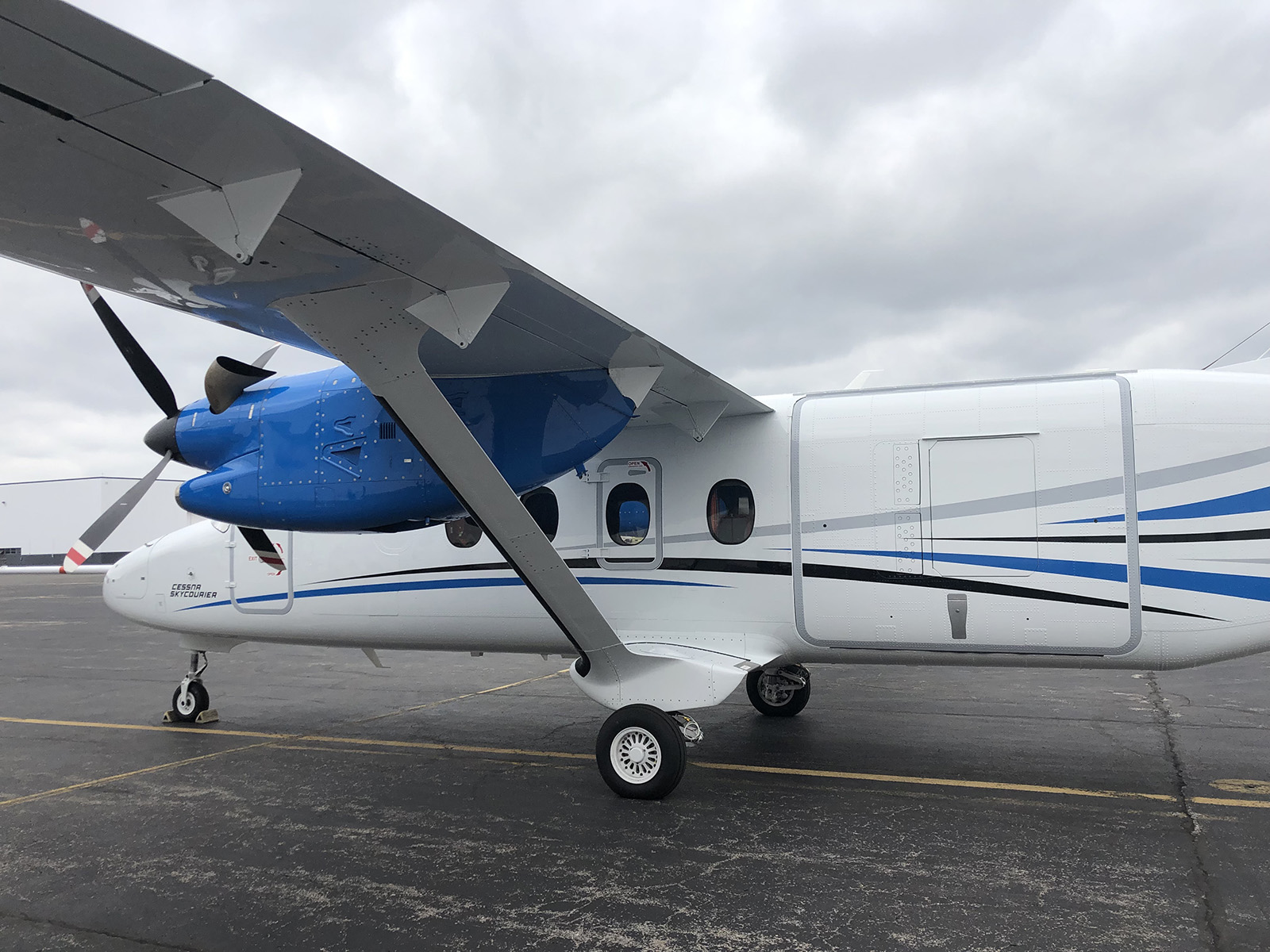Stay Up to Date
Submit your email address to receive the latest industry and Aerospace America news.
How technicians flight test components, including those in the Cessna SkyCouriers, the first of which is due for delivery to FedEx shortly
WICHITA, Kansas – Textron Aviation’s campuses here sprawl across hundreds of acres of plains, each punctuated by low-slung manufacturing buildings from which famous aircraft such as the Beechcraft Baron and Cessna Skyhawk sprang over the decades.
I’ll be visiting two of the campuses on this day to learn about Textron’s most recent new aircraft, the twin turboprop Cessna SkyCouriers. FAA granted a type certification for them in March, setting the stage for delivery by air of the first production plane to FedEx “soon,” Textron says.
Juan Escalante, vice president of global sales for SkyCourier, and members of the Textron communications team, walked me to the tarmac outside a production facility on the main campus to see a test-flight version of SkyCourier set up in a passenger configuration.
Its most noteworthy feature is the large side door on its rectangular fuselage. Inside are fixtures for seats, but Escalante and others explain to me that in a cargo configuration the door is large enough to accommodate a standard LD3 container, a kind that until now could only be carried aboard wide body cargo jets.
I would, of course, love to see how these aircraft are being made at this moment in the production facility nearby, but Textron explains that those processes are proprietary.
So I’ll have to settle for learning what went into testing the SkyCourier design and components for FAA certification, and what goes into assuring the quality of components during the ongoing production.
Pilots are still flying test models of the plane, and one of those aircraft lands as we view the other plane. Two pilots emerge in tan flight suits, greeting us before disappearing into a nearby hangar.
We drive to a facility on another campus, where Aasiri Fernando, Textron’s director of engineering, shows me the equipment that all components and systems, including those on the SkyCouriers, must be tested on.
As we walk along, electricity buzzes in loud pulses to test the resilience of circuit boards and other equipment to lightning.
A shaker table leaps to life during a brief demonstration, its job being to subject components to vibrations like those experienced in flight.
“When you are flying the airplane, there’s a lot of vibration, and we’ve got to make sure nothing pops off or comes loose. If it passes this test, it is very unlikely there will be a problem in flight,” Fernando says. “If something comes loose, it goes back to the design board.”
In another corner of the facility, I witness employees create a small explosion from propane gas. Engineers need to be certain that components of an airplane will not ignite fumes around the plane. When all goes as planned, there is no explosion until the test technicians set off one to prove that in fact explosive gas was present but did not ignite.
Textron must still test components of SkyCourier and other aircraft during production for quality assurance, Fernando says.
The $400 million facility, built in 2009, includes a chamber to expose components to extreme heat and cold, and another chamber to expose such components to microwaves to make sure radio communications do not interfere with the functions of electronics.
“This facility was expensive to build but it has saved many millions of dollars and makes all our aircraft safer,” Fernando says.
SkyCourier components had to pass tests here in addition to completing the 2,100 hours of flight testing that earned the design its type certification.
Although I didn’t get to see the factory floor, I did observe that SkyCourier was designed for fast maintenance and servicing with quick access points throughout the aircraft for inspection and repair. The passenger version I saw had fixtures where quick-release seats and overhead bins could be installed.
“The SkyCourier is extremely versatile and can quickly be converted from passenger to freighter,” Escalante says.
Also, Escalante says Textron employs a technique known as monolithic machining to manufacture the airframe.
“With this technique, major assemblies are milled from a single piece of metal rather than assembled from smaller pieces, reducing the overall number of parts and resulting precise tolerances for easier assembly,” he adds.
What’s my big takeaway from the day? That I’ve been introduced to just a fraction of the processes and facilities required to make an aircraft that’s reliable enough to be trusted to fly passengers and valuable cargo. It’s no wonder that a SkyCourier costs $5.5 million to $7.4 million.
About paul brinkmann
Paul covers advanced air mobility, space launches and more for our website and the quarterly magazine. Paul joined us in 2022 and is based near Kennedy Space Center in Florida. He previously covered aerospace for United Press International and the Orlando Sentinel.
Related Posts
Stay Up to Date
Submit your email address to receive the latest industry and Aerospace America news.




